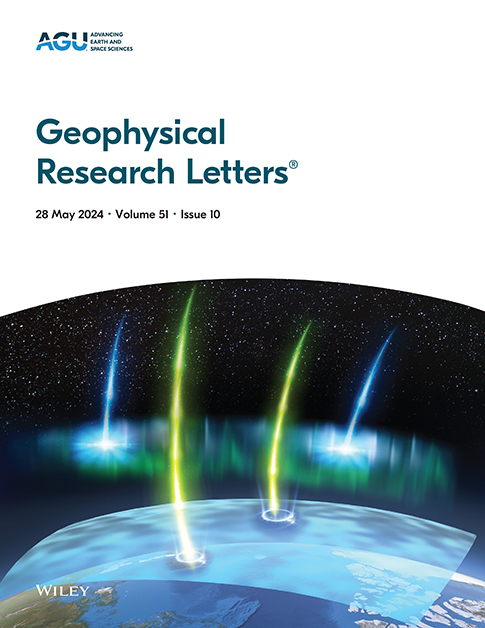由海洋翻转环流和热吸收调节的大量太阳减少导致的失控冷却
IF 4.6
1区 地球科学
Q1 GEOSCIENCES, MULTIDISCIPLINARY
引用次数: 0
摘要
气候系统可以对变暖和变冷做出不对称的反应,但这种不对称仍未得到充分研究。在理想的太阳强迫突变率为1%、2%、4%和6%的情况下,本研究利用两个耦合的全球气候模式进行了多世纪试验。在这两种模式中,在冰反照率反馈的驱动下,冷却对地表温度的影响大于变暖。然而,在强冷却(−4%,−6%太阳)下,模型明显偏离。一种模式经历了失控的冰增长,而另一种模式则经历了北太平洋缓慢的冰扩张,甚至短暂的海冰退缩。后者与强大的太平洋经向翻转环流的发展有关,该环流向北输送热量并减缓冰的生长。冰生长较少的模型也显示出更多的“冷吸收”(或从深海释放热量)。这些发现激发了对海洋-冰-大气相互作用模式间差异及其对气候反馈影响的进一步研究。本文章由计算机程序翻译,如有差异,请以英文原文为准。
Runaway Cooling From Large Solar Reductions Modulated by Ocean Overturning Circulation and Heat Uptake
The climate system can respond asymmetrically to warming and cooling, yet this asymmetry remains underexplored. This study uses multi‐century experiments with two coupled global climate models under idealized abrupt solar forcing changes of 1%, 2%, 4%, and 6%. In both models, cooling has a larger impact on surface temperature than warming, driven by the ice‐albedo feedback. However, under strong cooling (−4%, −6% Solar), the models diverge significantly. One model undergoes runaway ice growth, while the other has slower ice expansion and even transient sea ice retreat in the north Pacific. The latter is linked to the development of a strong Pacific meridional overturning circulation, which transports heat northward and slows ice growth. The model with less ice growth also exhibits greater “cold uptake into” (or heat release from) the deep ocean. These findings motivate further investigation of inter‐model differences in ocean‐ice‐atmosphere interactions and their impacts on climate feedbacks.
求助全文
通过发布文献求助,成功后即可免费获取论文全文。
去求助
来源期刊

Geophysical Research Letters
地学-地球科学综合
CiteScore
9.00
自引率
9.60%
发文量
1588
审稿时长
2.2 months
期刊介绍:
Geophysical Research Letters (GRL) publishes high-impact, innovative, and timely research on major scientific advances in all the major geoscience disciplines. Papers are communications-length articles and should have broad and immediate implications in their discipline or across the geosciences. GRLmaintains the fastest turn-around of all high-impact publications in the geosciences and works closely with authors to ensure broad visibility of top papers.
 求助内容:
求助内容: 应助结果提醒方式:
应助结果提醒方式:


